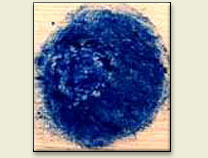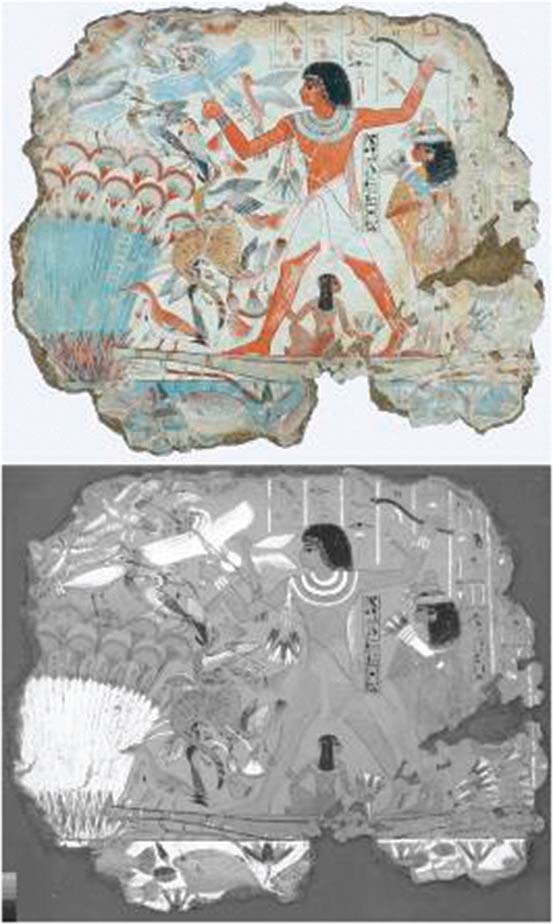
Brief description of Egyptian blue:
Very stable synthetical pigment of varying blue colour. It is a copper calcium silicate that was the first synthetic pigment and the most extensively used from the early dynasties in Egypt until the end of the Roman period in Europe. Many specimens, well over 3000 years old, appear to be little changed by the time. Egyptian blue
Names for Egyptian blue:
| Alternative names: | frit, Pompeian blue | ||||||
| Non-English names: |
|
||||||
| Origin: | artificial | ||||||
| Chemical name: | Calcium copper silicate |
Example of use by artists:
The new life of Egyptian blue
Egyptian blue could find use in the modern era in applications such as biomedical analysis, telecommunications, and lasers, according to a new report (2009). A quantitative study of the pigment luminescence properties assesses its quantum efficiency and lifetime. It was found that Egyptian blue has an exceptional high luminescence quantum yield for a molecular-level infrared emitter. Egyptian blue's long luminescence lifetime and intense IT emission make it a promising candidate for use in biomedical application, for example, because IR photons can deeply penetrate human tissue and the pigment's emission at 910 nm minimizes light absorption by tissues. Furthermore, the pigment is extremely stable, exhibiting bright luminescence even after millennia. Ancient Egyptians may not have gained eternal life but one of their most frequently used pigments may now have a future in a variety of high-tech applications.

Fowling in the marshes , Nebamun wall painting fragment, British Museum, London, UK
Top, visible. Bottom, infrared photoluminescence.
Bright white areas in the photoluminescence image correspond to the presence of high luminescent Egyptian blue.
(intro) - Azurite - Cerulean Blue - Cobalt blue - Egyptian blue - Prussian blue - Smalt - Ultramarine

